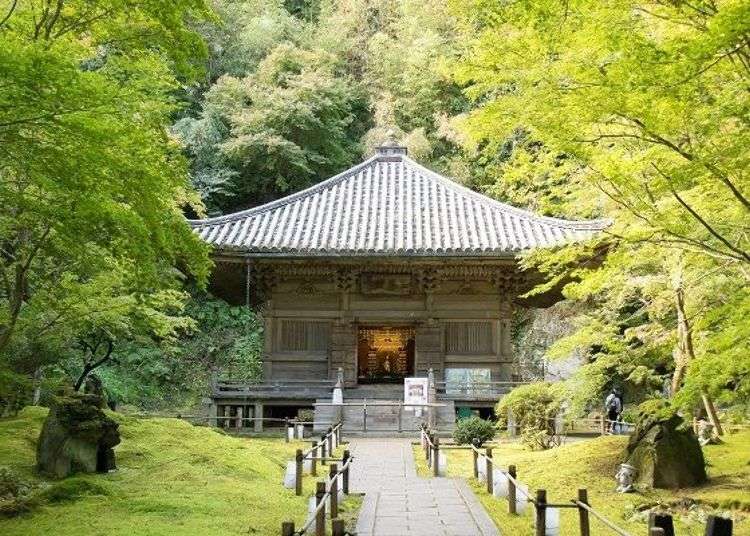
One of Japan's three major scenic spots, Matsushima in Miyagi Prefecture, is home to Entsuin Temple. Also known as the matchmaking temple, it is also a popular thing to see in Matsushima for many tourists.
There are many fun things to do at Entsuin Temple in addition to walking in its beautiful garden, making original prayer beads, and praying! The autumn leaves when illuminated is a sight you really must see.
The matchmaking Goddess of Mercy looks out on Entsuin Temple's beautiful garden
Many temples related to the Date Clan still remain in Matsushima-machi, Miyagi Prefecture. This place is not only famous for Zuiganji, a national treasure and temple that Date Masamune rebuilt, but also as a popular tourist spot attracting many to the nearby Entsuin, famous as a matchmaking temple.
Entsuin Temple is about a 30-minute car ride on the expressway from Sendai. It is about a 5-minute walk from Matsushima Kaigan Station on the JR Sengoku Line if you go be train.
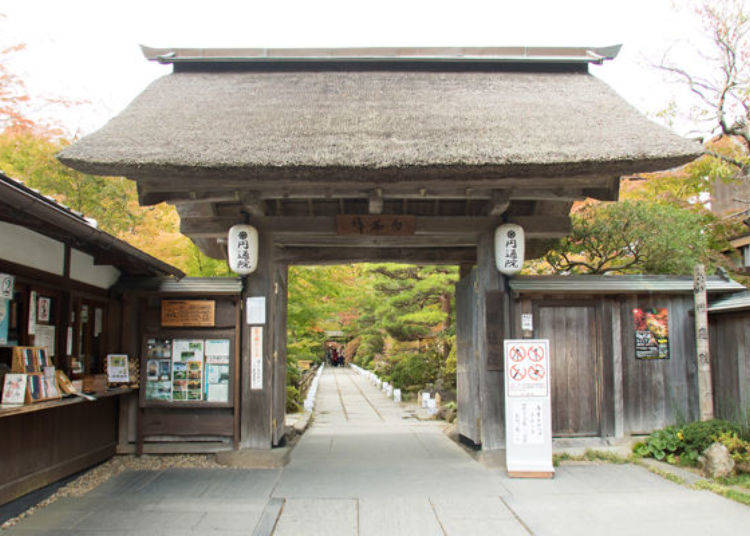
▲ Yakuimon (Sanmon) is a designated cultural asset of the town.
Entsuin Temple was founded in 1647 as a mausoleum for Mitsumune, the grandson of Date Masamune. The Enmusubi Kannon [Matchmaking Goddess of Mercy] is located on the left just after you enter through the thatch-roofed Sanmon Gate.
The Goddess of Mercy is said to bring together men and women or people who have not yet had a relationship and are seeking one.
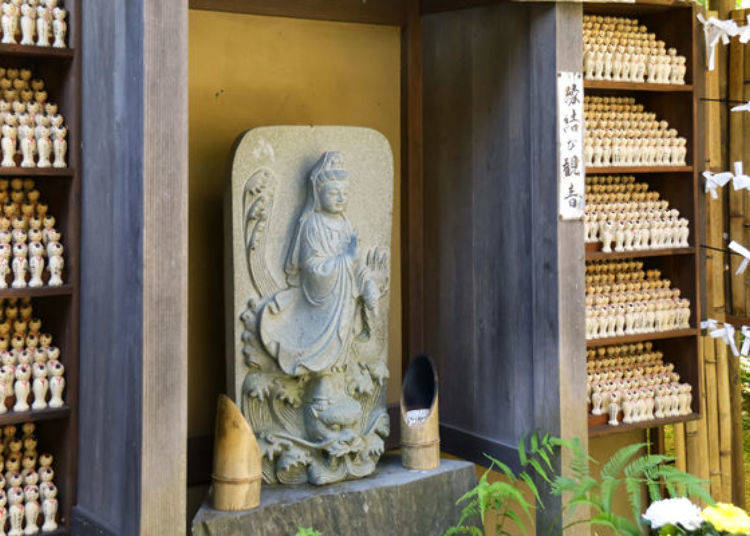
▲ The matchmaking Goddess of Mercy is depicted as a Kannon Bodhisattva riding a dragon.
Numerous small kokeshi dolls line the shelves on each side of her! Those seeking a match write what they wish for on an Enmusubi Kokeshi and offer it here. These give you a good idea of the sheer number of people who visit here to pray for a good relationship!
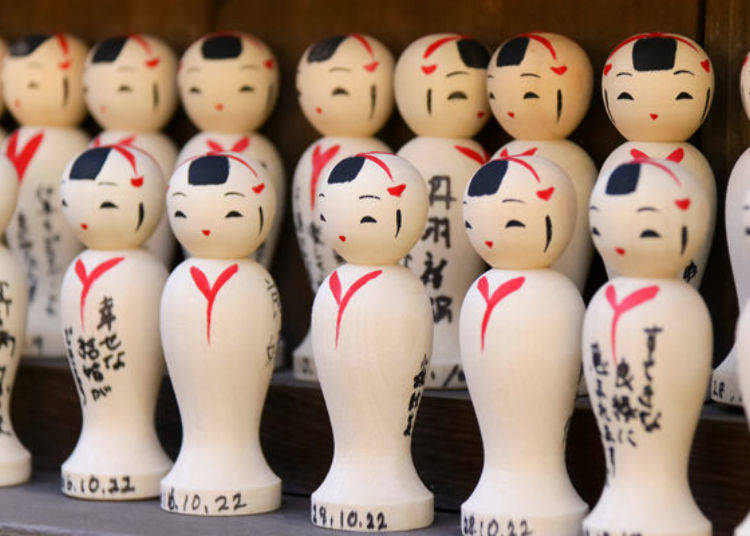
▲ The Enmusubi Kokeshi (500 yen) is about 5 cm tall.
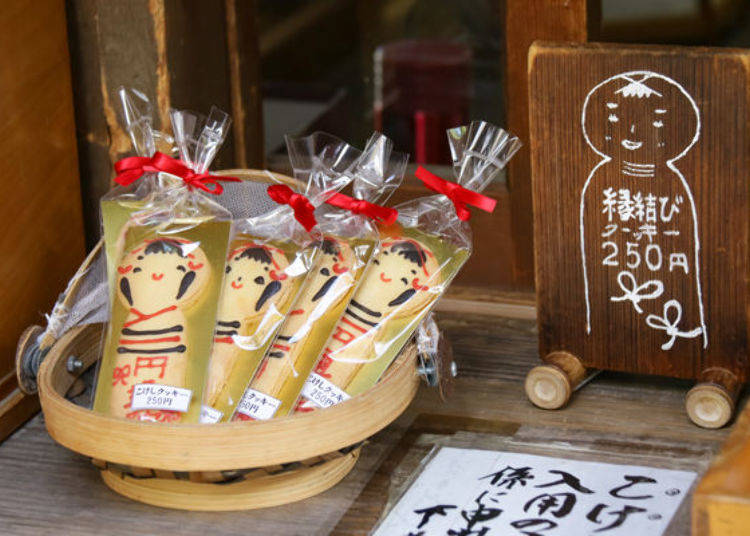
▲ Cute Kokeshi cookies (250 yen) are also available next to the Enmusubi Kokeshi!
After leaving the Matchmaking Goddess of Mercy you will come upon two gardens. The Ama no Niwa [Garden of Heaven] rock garden represents Matsushima Bay and the Ji no Niwa [Garden of Earth] represents life. Here you can sit and leisurely admire the scene.
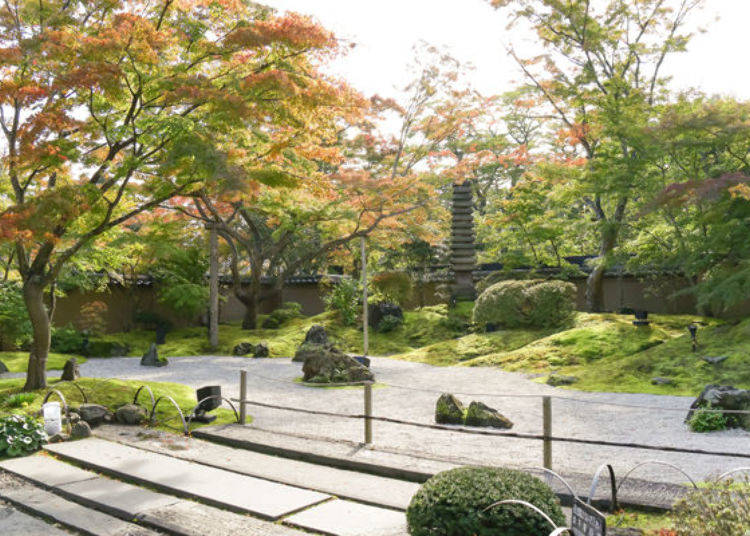
▲ The Garden of Heaven represents Matsushima Bay with white sand and moss.
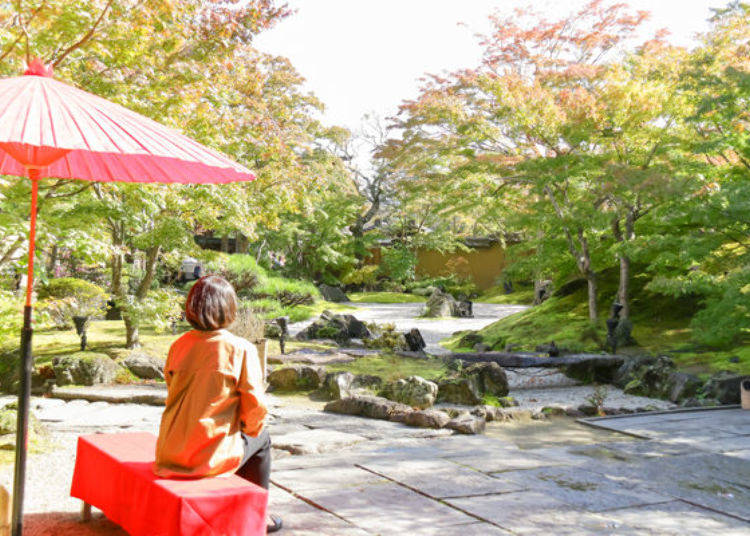
▲ The rustic and quaint Garden of Heaven and Garden of Earth.
There is another beautiful garden in front of the main hall. This is called Enshu no Niwa [Garden of Enshu] and is said to have been created by Kobori Enshu, a famous gardener of the Edo period.
The pond is in the shape of the Japanese character for “heart” and the garden is famous for its many maple trees. In autumn their beauty is increased many times over when their leaves turn bright red.
The beauty of the Entsuin Temple gardens is transformed by each of the four seasons; in spring it is radiant with luxurious greens, in winter mantled with drifts of snow.
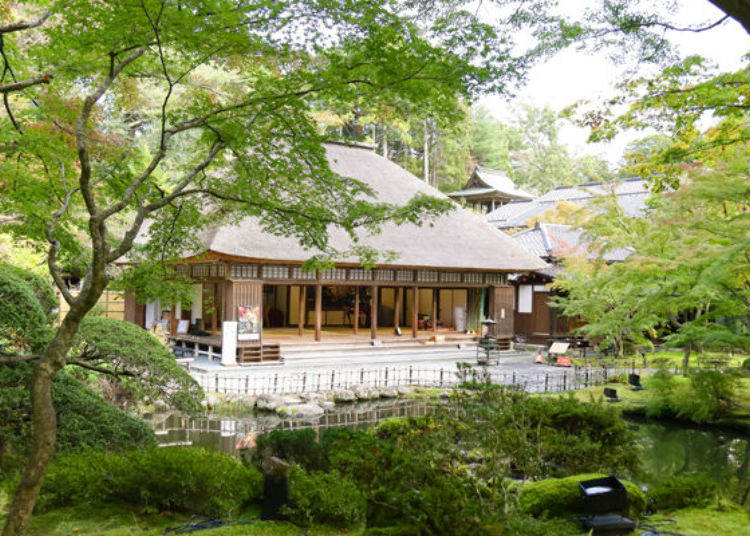
▲ The Garden of Enshu is said to have been moved from the Date Clan estate in Edo to here.
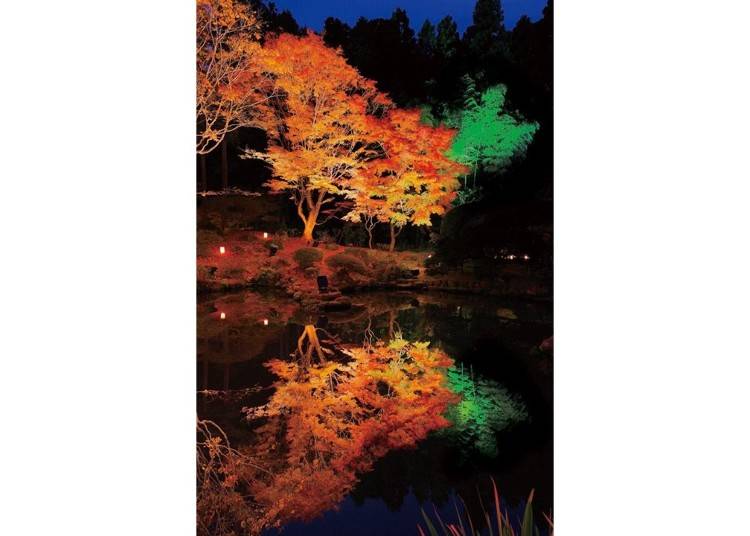
▲ The latter part of October to the latter part of November is the best time to see the autumn leaves which are illuminated at night.

▲ The illuminated mountain path is also mystical.
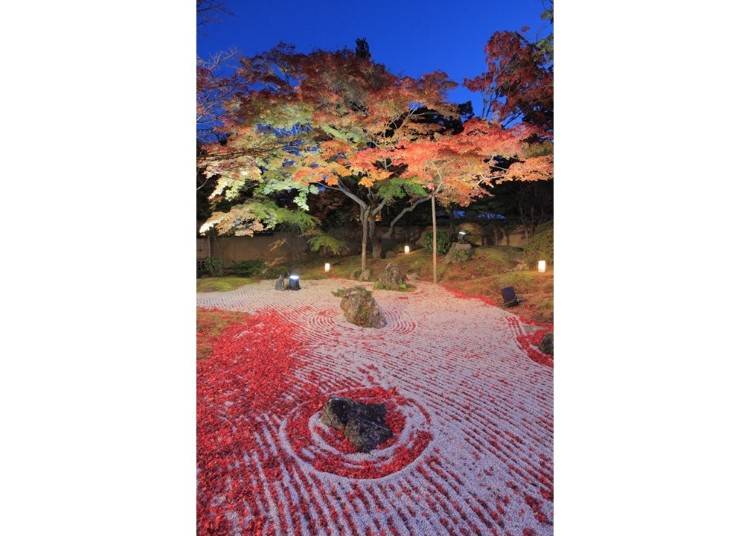
▲ The illuminated rock garden adorned in fallen autumn leaves is a sight you really must see.
The mausoleum is a cultural asset having a hint of Western culture and is a must-see!
Beyond the Entsuin is the Sankeiden in which Date Mitsumune is enshrined. Mitsumune's father, Tadamune (the second-generation lord of Sendai), er…

